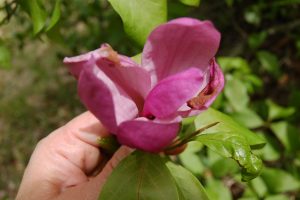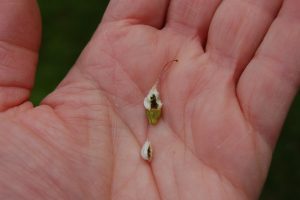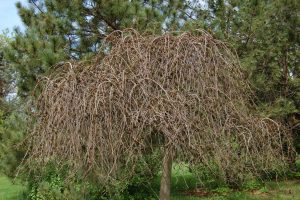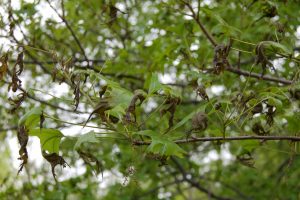As most gardeners have marveled, we’re having one of the earliest “spring” seasons this year, with woody plants and herbaceous perennials three to six weeks ahead of “normal.”
And then, perhaps inevitably, “normal” spring frost and freeze visited. Being so much further along in their development, plants are quite vulnerable to damage.
Home fruit-growers have reason to be concerned: At 28 F, you can expect a 10-percent loss of flowers/young developing fruit. However, at 25 F that loss increases to 90 percent! Here, in the Lafayette area, we hit 27-28 F last Thursday (April 12) morning, followed by 24-25 F Friday (April 13) morning – a double whammy.
Bud counts were exceptionally high until the freeze, so in some cases, even just 10 percent retained fruit might still be a decent crop on our tree fruits. Grapes may also still have ability to crop on shoots that have yet to emerge. Strawberries are a bit easier to protect through frost and freeze, but only if you took measures, such as using floating row covers, recovering with straw, etc.
However, it is only mid April, and additional frosts/freezes are still possible. Bottom line is that unless it is already a complete loss, we won’t really know the rest of the story for quite a few more weeks.
It is easy to check fruit buds for damage by cutting open the bud and looking for dark brown or black centers. Our Purdue Extension fruit specialists put together these videos to help you assess the status of your fruit plants.
Assessing Spring Freeze Damage to Apples
Video: http://youtu.be/YcSRg74Hb_A
Assessing Spring Freeze Damage to Peaches
Video: http://youtu.be/DcS2XGAqoFk
Assessing Spring Freeze Damage to Grapes
Video: http://youtu.be/lNUZu5Bx08M
Assessing Spring Freeze Damage to Strawberries
Video: http://youtu.be/F-QoX1C4_S0
Assessing Spring Freeze Damage to Blackberries
Video: http://youtu.be/EyIhvfY2apM
For ornamental trees and shrubs, plant response has been quite varied, depending on species, location and, of course, temperature and duration of that temperature. Susceptible plants may have wilted leaves, brown or black necrotic spots on leaves, or perhaps dieback of entire twigs. Plants that were in bloom likely have brown petals or dropped flowers entirely. Here are some links to articles from previous spring freezes that will give more information.
http://www.ppdl.purdue.edu/ppdl/hot10/5-14.html
http://www.ppdl.purdue.edu/ppdl/weeklypics/Weekly_Picture6-25-01-1.html
Note that freeze incidents are normal for this time of year. What is abnormal is the earliness of development, leaving the plants exceptionally vulnerable to freeze. The good news is that woody plants, in most cases, will outgrow the damage.



